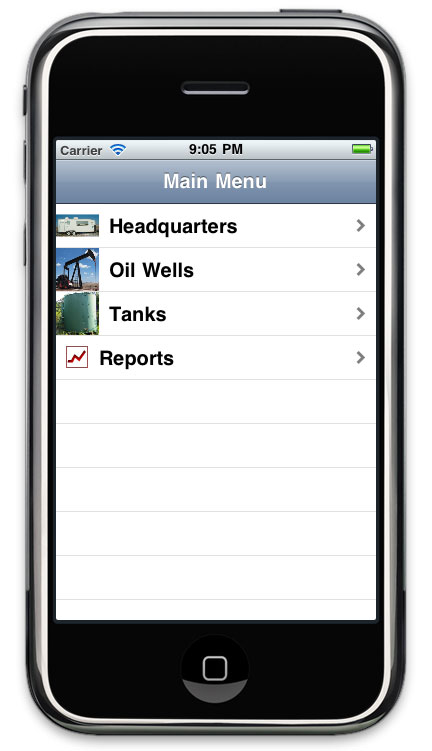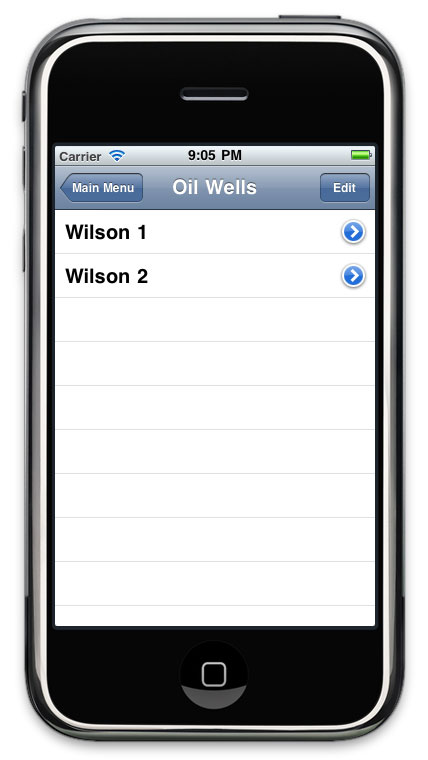 The screen shot on the left shows how the application information can be organized. This “table” oriented navigation is typical of iPhone applications and should be familiar to anyone acquainted with basic iPhone operation.
The screen shot on the left shows how the application information can be organized. This “table” oriented navigation is typical of iPhone applications and should be familiar to anyone acquainted with basic iPhone operation.
Touching any one of the four option rows in the table will take the user to the respective category. The icons further help the user to visually identify the categories.
The headquarters option is identified with an image of a trailer. It’s the place where the supervisor and coffee pot are located. This category is where general information about the oil field is located.
–
 The oil wells option is identified with an image of an oil well. It is where the list of each oil well is found.
The oil wells option is identified with an image of an oil well. It is where the list of each oil well is found.
The tanks option is identified with an image of an oil storage tank. It is where a list of each tank in the tank battery is found.
The final reports option is identified with an image of a graph. It is where special reports on each well and tank can be found.
The second screen shows the oil wells selection which contains a list of wells. In this case the wells Wilson 1 and Wilson 2 are listed. The navigation bar at the top of the screen shows the title of the page, “Oil Wells” and contains a “Main Menu” button which allows the user to return to the previous page. The edit button allows the user to add and delete wells from the page. By touching one of the rows, the user will be taken to a screen with a list of gauges for the specific well.
As you can see, the user is guided through a menu hierarchy that goes from general to more specific options with each page. The button at the top allows the user to return back up to the previous level. Since this navigation method conforms to the Apple user interface guidelines, it is regularly and consistently used in many iPhone application for navigation and will be familiar to any iPhone user.
For those not familiar with the iPhone, notice that there is no need for a keyboard. All input is done by the touch of a finger in the area of a button or table row, as pictured above.
In additional blog posts we will look at the data acquisition screens.
–

Recent Comments